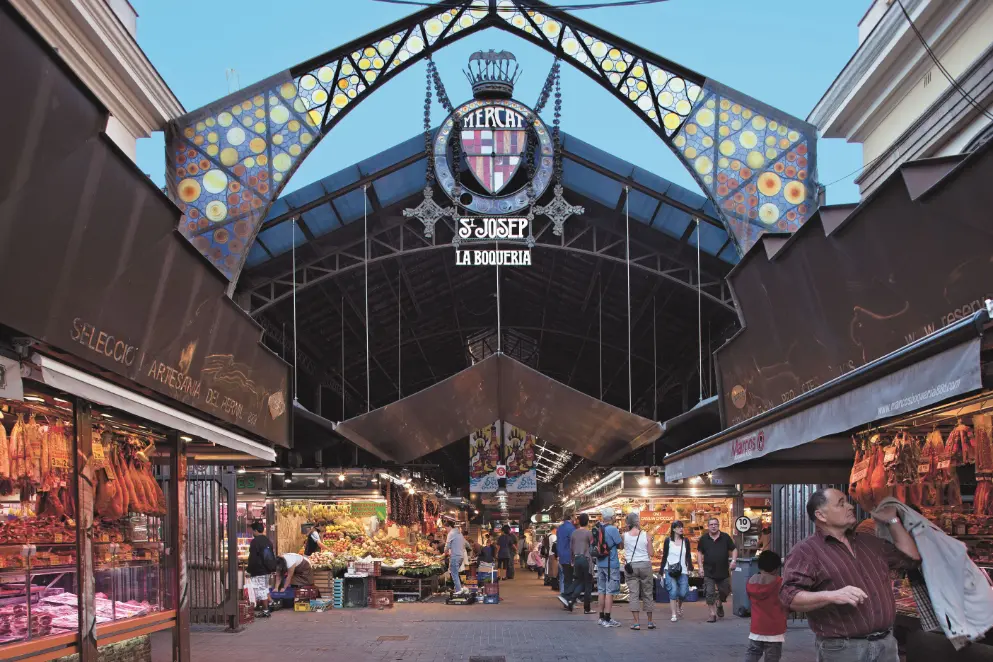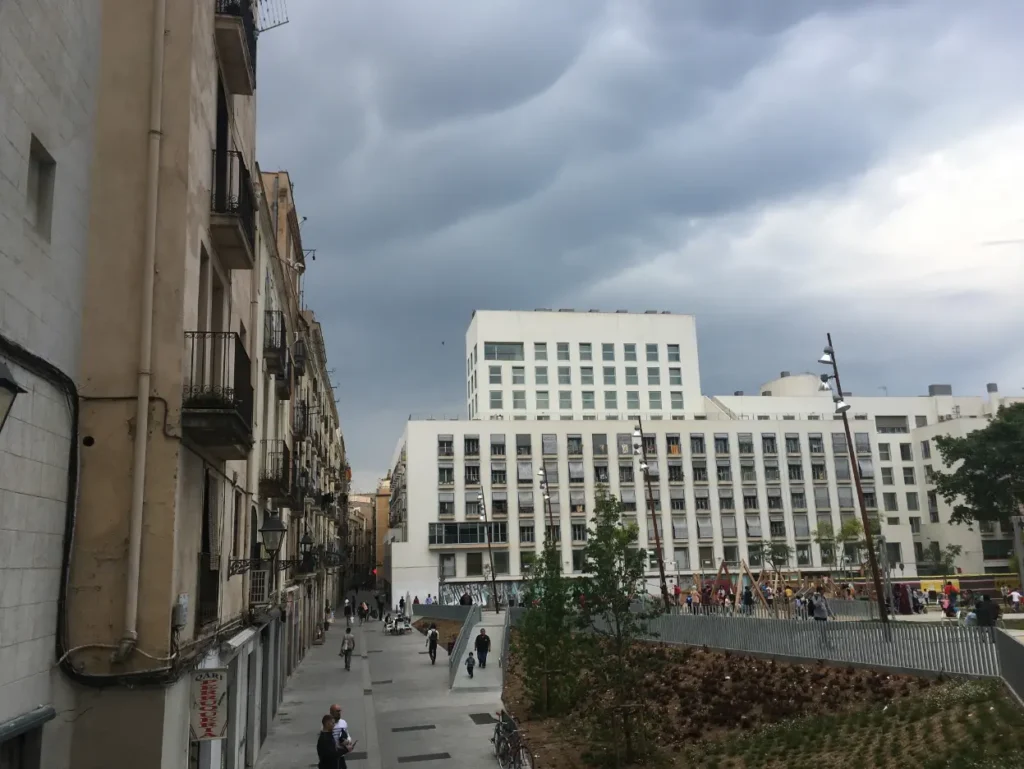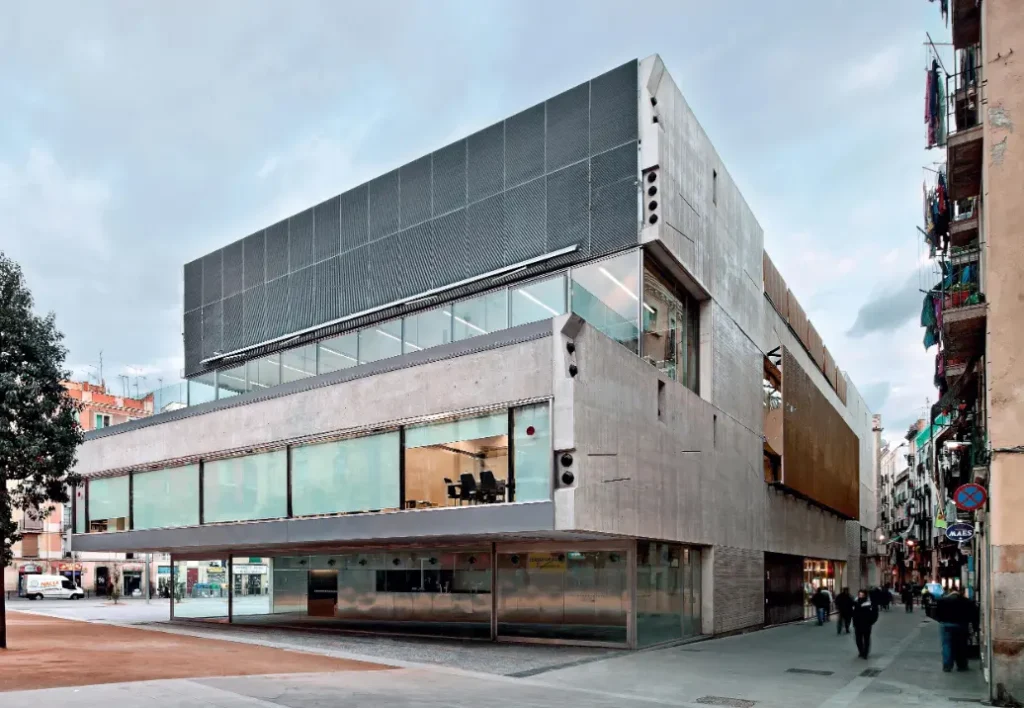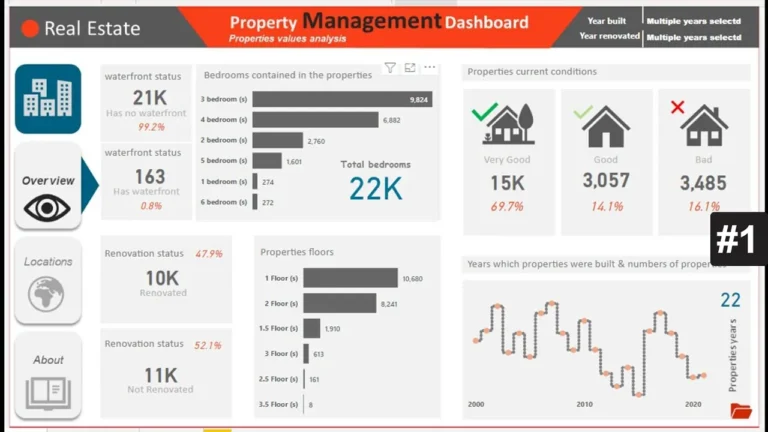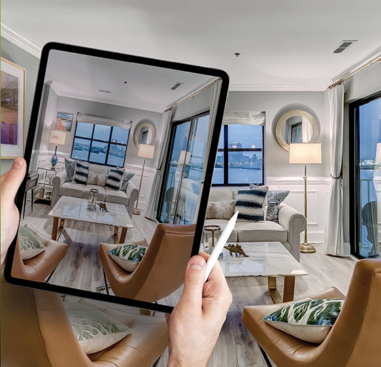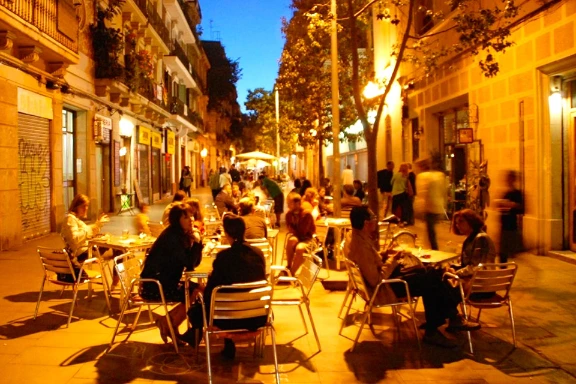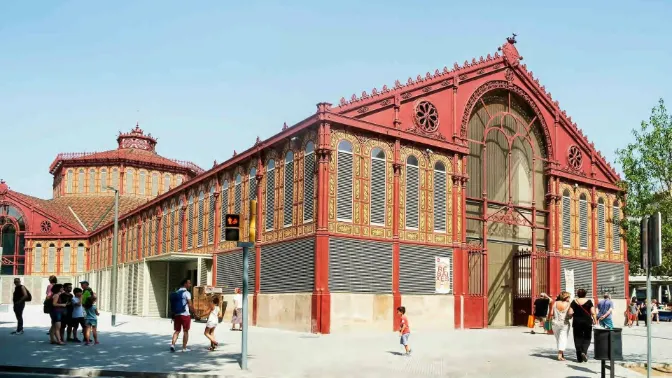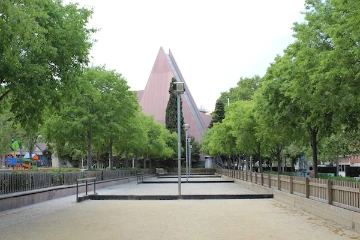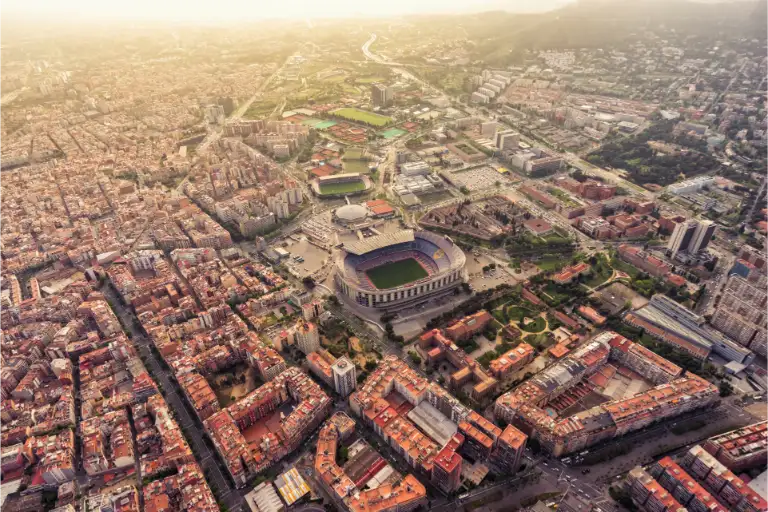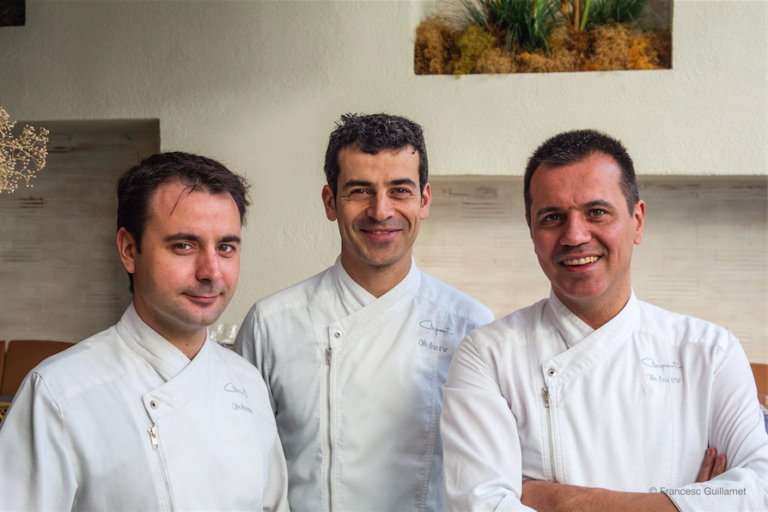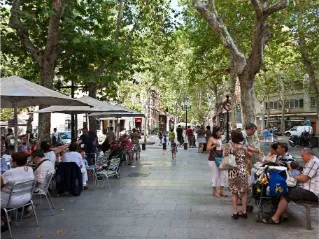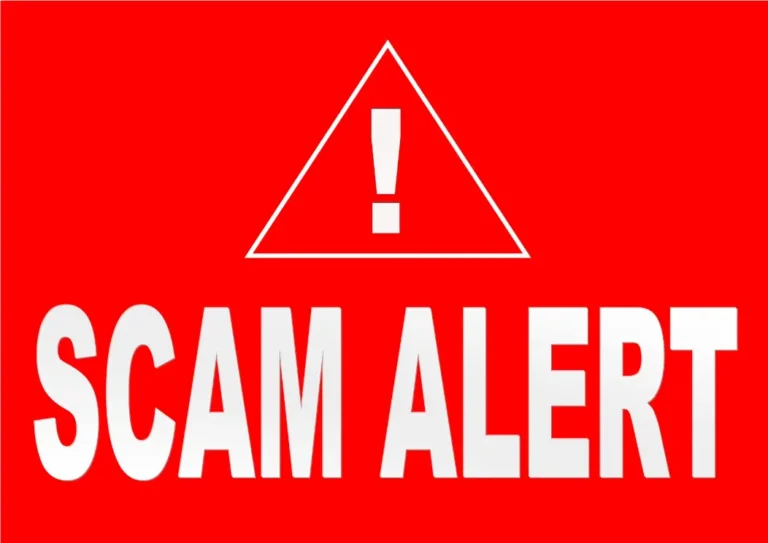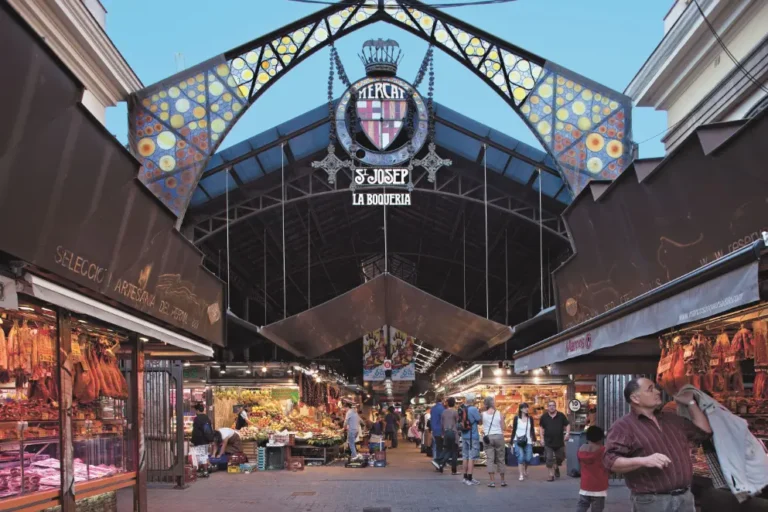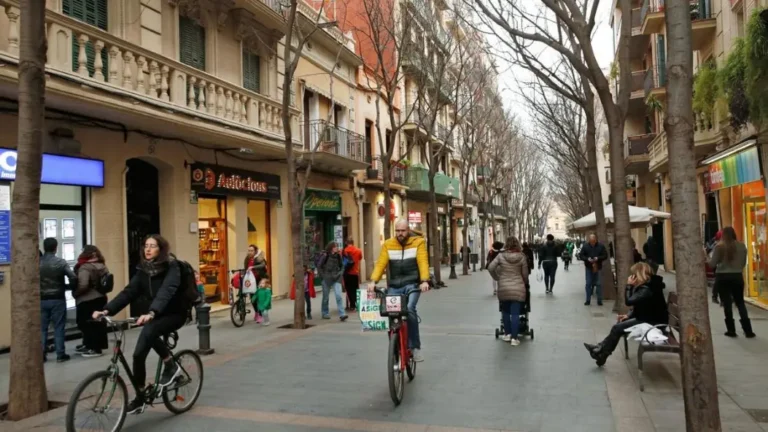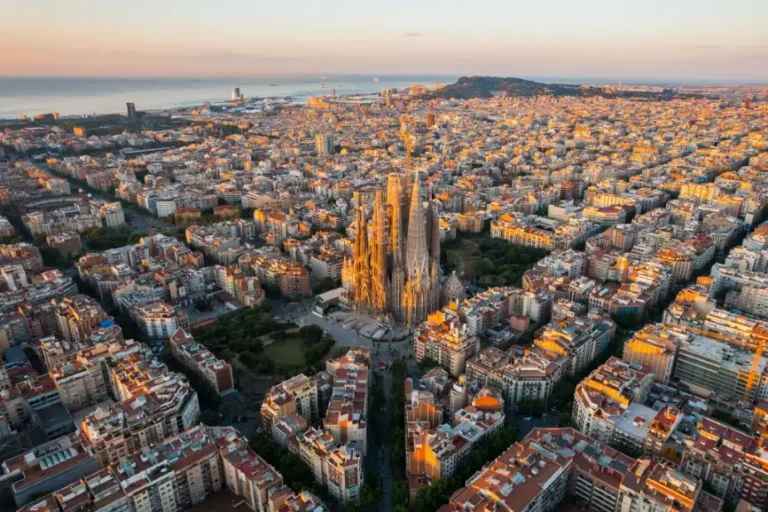El Raval at a Glance
Central, gritty, and creative—El Raval mixes historic streets with galleries, indie shops, and a multicultural food scene. Prices are lower than the Gothic Quarter/Eixample, rental demand is strong, and the vibe is bohemian. It’s lively and convenient, but you trade some peace & green space for energy and proximity.
History & Transformation
Once farmland outside the medieval walls, Raval industrialized in the 19th century and later gained the “Barri Xino” reputation. From the 1990s, regeneration anchored by MACBA and the Filmoteca brought students and creatives. Today it’s an in-transition district—old fabric + new culture—still evolving block by block.
Livability: Pros & Cons
- Pros: walk-everywhere location (La Rambla, Plaça Catalunya); diverse dining; lower entry prices; strong rental demand.
- Cons: night-time noise in some streets; limited green space; building stock can be dated; be pickpocket-aware in busy spots (more on citywide safety here: Is Barcelona a safe place to live?).
Transportation & accessibility
El Raval, Barcelona sits right in the middle of things—between La Rambla and Avinguda del Paral·lel—so getting anywhere is quick. Whether it’s the beach, the old town, or residential pockets further out, you’re rarely more than a couple of metro stops away.
Metro & bus connectivity
- L2 (Purple) and L3 (Green) cut across the neighborhood and link to key hubs in minutes.
- Bus lines crisscross Raval and connect to the waterfront, Montjuïc, Eixample, and beyond.
- Plaça Catalunya—one of the city’s main transfer points—is a short walk for metro, buses, and regional trains.
Walkable & bike-friendly
- Compact blocks mean most daily errands are on foot.
- City bike lanes and Bicing stations sit around the edges, making cycling a practical option.
Airport & train access
- Barcelona–El Prat (BCN) is typically ~30–40 minutes away via public transport, depending on route.
- Estació de Sants (for AVE and regional trains) is a short metro or taxi ride.
Investing in El Raval
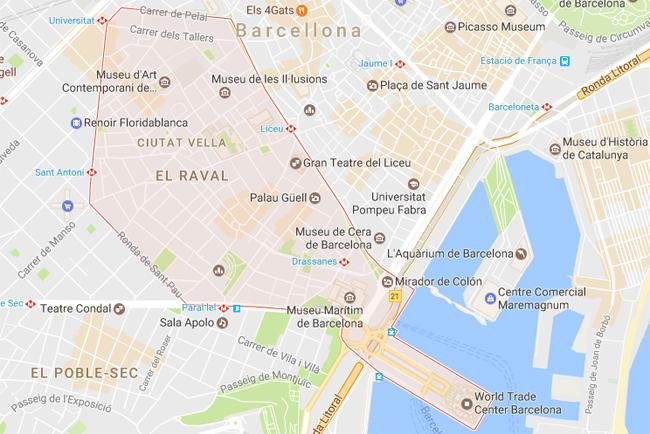
Investing in El Raval
Real estate market in El Raval
El Raval real estate offers central location value versus neighboring Gothic Quarter or Eixample. Typical asking prices span roughly €2,800–€5,000 per m², with big swings by micro-location, building quality, floor height, elevator, and recent refurbishments.
Property types you’ll see
- Historic walk-ups (some ready, many in need of work)—watch ceiling height, structure, and windows.
- Industrial/loft conversions in select pockets.
- Updated apartments in refurbished buildings with lifts, better soundproofing, and efficient layouts.
Rental market (what actually performs)
- Mid-term (90–11 months) and long-term lets drive most investor returns—steady demand from students, creatives, and young professionals.
- Short-stay licenses are tightly regulated citywide; model your figures on legal mid/long-term scenarios.
- Best retention tends to be one–two streets off the busiest axes, on upper floors with double-glazing.
Who should consider buying in El Raval?
- Young professionals who want walk-everywhere living and a creative, multicultural scene.
- Investors seeking central value and resilient rental demand (mid/long-term).
- Renovators comfortable with refurb projects in older stock for equity upside.
Investor summary
El Raval combines central Barcelona access, more attainable €/m², and diverse tenant demand. It won’t suit buyers who need quiet streets or large green spaces, but for long-horizon investors it offers solid fundamentals—especially with careful street selection, good windows, and clear compliance on rental terms.
Investing in El Raval
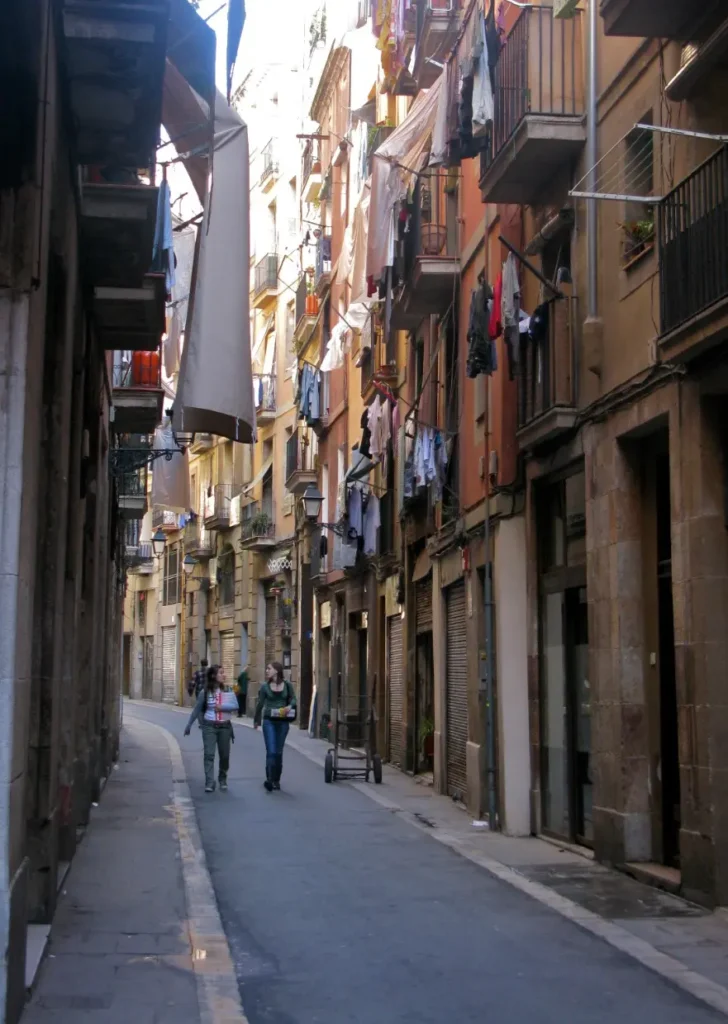
Investing in El Raval

Nightlife in El Raval
El Raval nightlife mirrors the neighborhood itself—eclectic, creative, and a little bohemian. You’ll find intimate cocktail spots, late-night dive bars, flamenco venues, and indie rooms with live bands or DJ sets. Crowds are mixed: students, artists, expats, and long-time locals. Expect energy on weekends and a steady hum most weeknights near MACBA and the main corridors.
What to expect
- Bars & clubs: small rooms with personality over mega-clubs; craft cocktails, natural wines, and classic vermouth bars.
- Live music & flamenco: regular indie sets and flamenco nights add to the artsy vibe.
- Later hours: weekends run late—choose upper floors or rear orientations if you’re noise-sensitive.
Dining in El Raval
The El Raval restaurants scene is one of Barcelona’s most diverse: traditional Catalan kitchens next to Middle Eastern grills, South American comfort food, Indian thalis, and modern tapas bars. It’s a great area to eat adventurously without leaving the neighborhood.
Food highlights
- Traditional Catalan: hearty classics and seasonal menus in long-running spots.
- Global flavors: Middle Eastern, Latin American, Indian, and Asian kitchens reflect Raval’s multicultural roots.
- Modern tapas: creative small plates and natural wine bars for a contemporary take.
Close to other hotspots
When you want to switch gears, you’re a short walk to the Gothic Quarter, Sant Antoni, and Poble Sec—all with their own scenes (historic taverns, rooftop bars, and excellent pincho streets). El Raval’s central Barcelona location makes “neighborhood-hopping” easy while keeping a laid-back base at home.
Investor angle: nightlife & dining draw
For the buy-to-let model, the area’s year-round footfall and diverse dining/nightlife support steady demand for mid-term and long-term rentals. Focus on streets one or two blocks off the loudest axes for better livability and tenant retention, and verify building bylaws before setting your rental strategy.
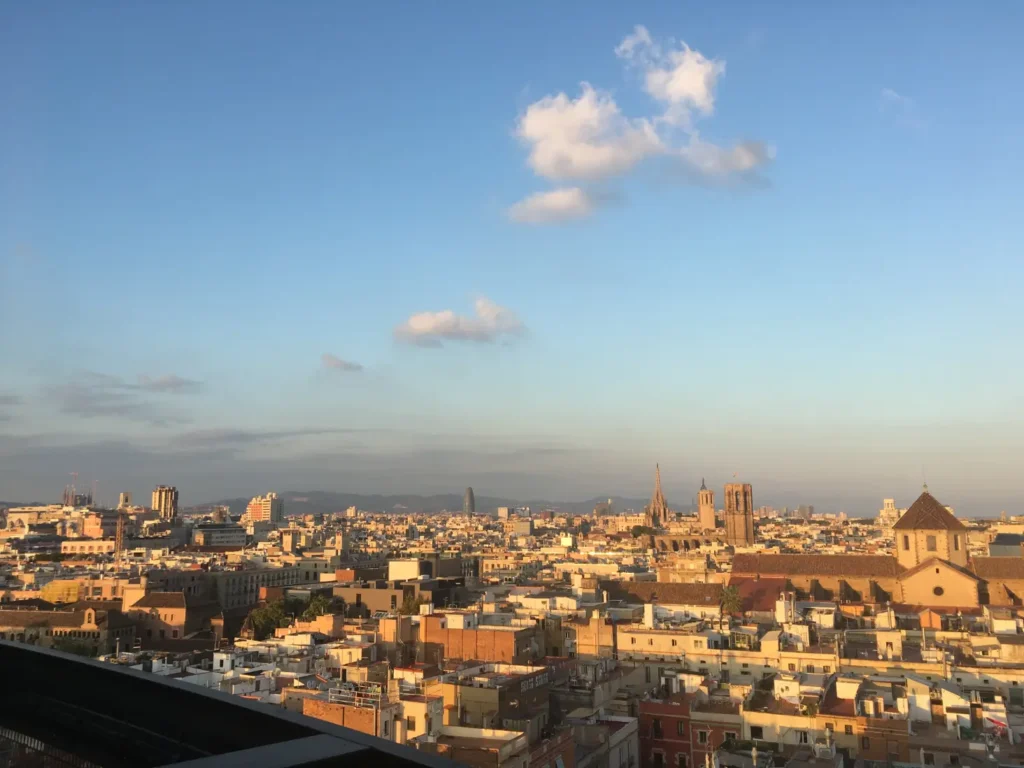
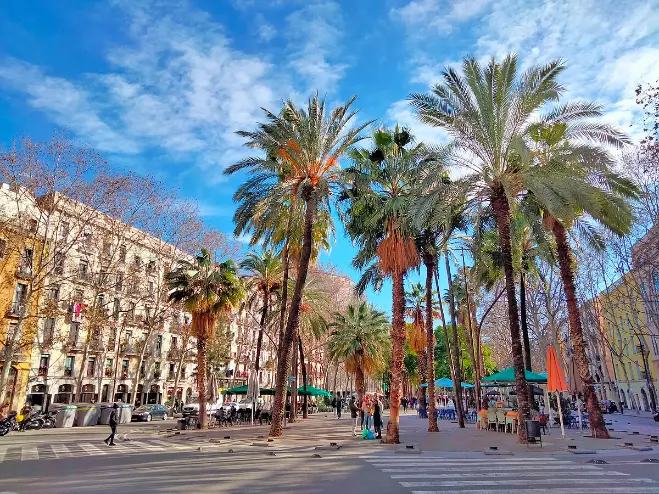
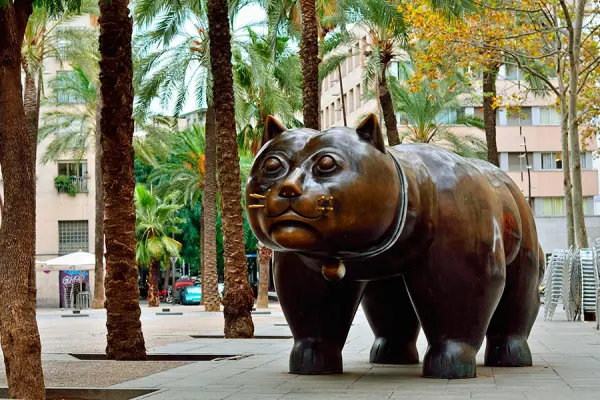
Traditional yet evolving
El Raval, Barcelona is one of the city’s most diverse and dynamic neighborhoods. The medieval street grid, centuries-old façades, and classic bodegas are still here—now sharing space with modern galleries, specialty coffee bars, and creative studios. That friction between old and new is the charm: authentic, slightly scrappy, and very alive.
Key landmarks (and why they matter)
- MACBA (Museum of Contemporary Art): the anchor of Raval’s art scene and the city’s unofficial skate plaza at Plaça dels Àngels.
- CCCB (Centre de Cultura Contemporània de Barcelona): exhibitions, talks, festivals—your “what’s on” calendar lives here.
- Filmoteca de Catalunya: classic cinema, retrospectives, and filmmaker events—great weekday nights.
- Rambla del Raval: the palm-lined boulevard with Botero’s “El Gato” (giant bronze cat) and a rotation of cafés and terraces.
- La Boqueria Market (edge of Raval): Barcelona’s iconic food market—touristy at the front, serious produce in the back aisles.
- Antic Hospital de la Santa Creu / Biblioteca de Catalunya: Gothic courtyards and one of the city’s most atmospheric libraries.
- Sant Pau del Camp: Romanesque church and cloister—peaceful, austere, and beautiful.
- Palau Güell (just off La Rambla): early Gaudí grandeur; a reminder that Raval borders some heavy hitters.
- Mercat de Sant Antoni (nearby): late-19th-century iron market—books and vintage on weekends, daily food halls mid-week.
Tip: if you’ll link these internally later, we can wire each item to your guides—just send URLs.
Events & street life
- Neighborhood festivals: summer’s Festa Major del Raval brings concerts, decorated streets, and community events.
- Arts programs: seasonal initiatives (e.g., Raval(s), Raval Cultural activities) fill the calendar with music, exhibitions, and open-air performances.
- Markets & pop-ups: vintage fairs, design pop-ups, and food events spill across Rambla del Raval and surrounding squares.
Community feel
Despite the central location and the international mix, Raval keeps a village vibe. You’ll run into the same barista, the same greengrocer, the same neighbors in the square. Daily life leans local—small bakeries, family-run shops, and a web of community associations keep the neighborhood inclusive and welcoming.
My take: if you want Barcelona neat and polished, Raval won’t be your favorite. If you want texture, walkability, and that “always something happening” energy, it’s hard to beat—especially at its price point.
Investing in El Raval
Investing in El Raval
Who should consider buying in El Raval?
El Raval real estate suits buyers who want central Barcelona, culture on the doorstep, and value per m² compared with neighboring Gothic Quarter or Eixample.
Young professionals
- Central location: walk or bike to La Rambla, MACBA, Sant Antoni, and major transit hubs.
- Everyday convenience: cafés, co-working, gyms, markets, and late-open eateries within a few blocks.
- Lifestyle fit: multicultural, creative, and social—ideal if you value street life and independent venues.
Investors
- Attainable entry prices: typically €2,800–€5,000/m² depending on micro-location, floor, lift, and condition.
- Resilient demand: steady mid-term (90–11 months) and long-term rental interest from students, creatives, and young professionals.
- Upside via refurbishment: older stock rewards smart layout fixes, soundproofing, and energy upgrades.
- Compliance first: short-stay licensing is tightly restricted in Barcelona—model returns on legal mid/long-term lets.
Renovators & value seekers
- Historic walk-ups: good candidates if you’re comfortable with stairs, structure checks, and window upgrades.
- Loft-style units: occasional industrial conversions offer volume and character close to Plaça dels Àngels and Rambla del Raval.
Consider before you buy
- Street selection matters: choose calmer lanes one–two streets off the busiest axes for quieter evenings.
- Noise & size: many flats are compact; prioritize upper floors and double-glazing.
- Green space: limited in-barrio—consider proximity to Montjuïc or nearby parks if that’s important.
- Building due diligence: check community minutes, ITE/aptitud certificates, and any planned façade/roof works.
Bottom line: buying in El Raval isn’t for everyone—but for buyers who value centrality, culture, and renovation potential, it offers strong fundamentals and diversified tenant demand.

